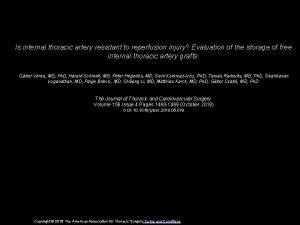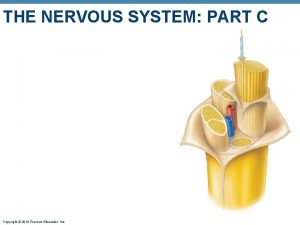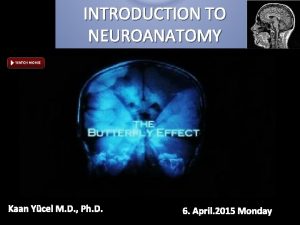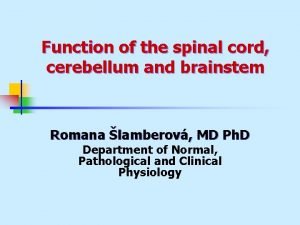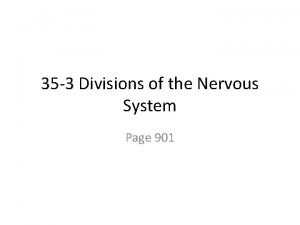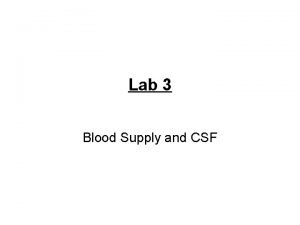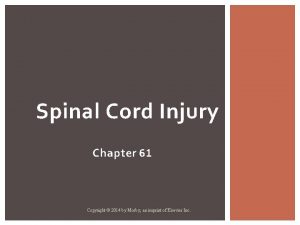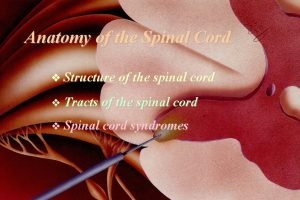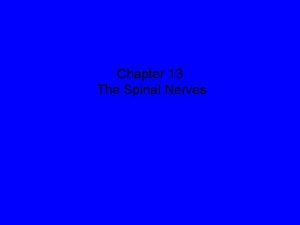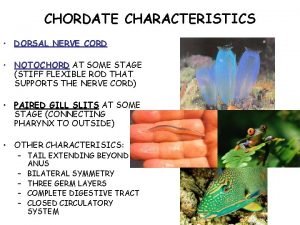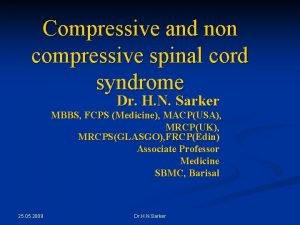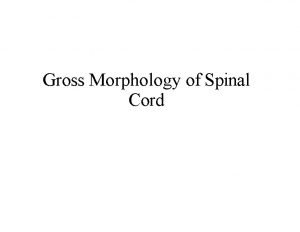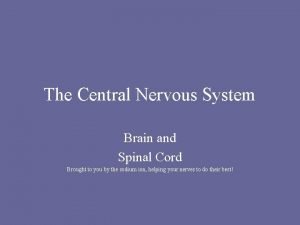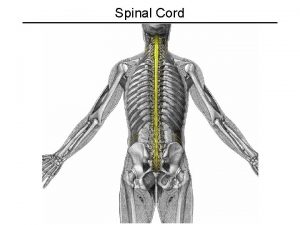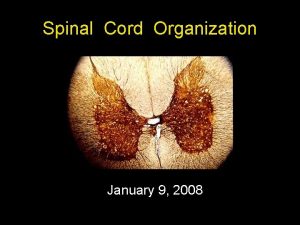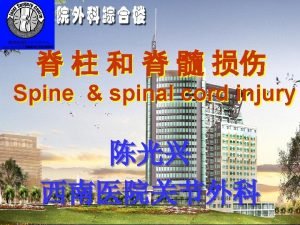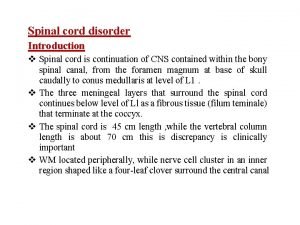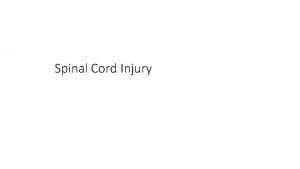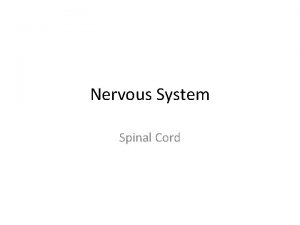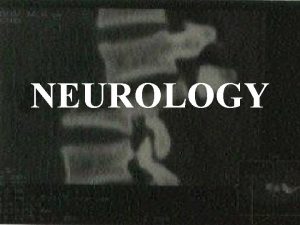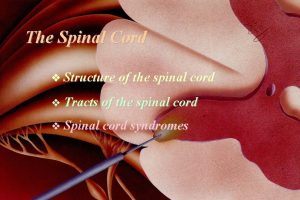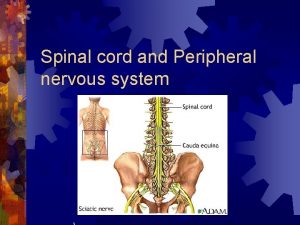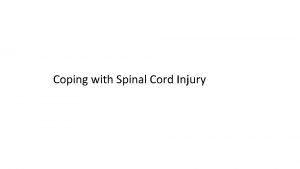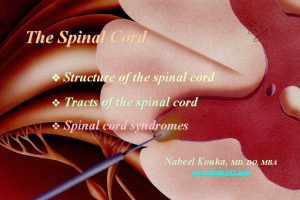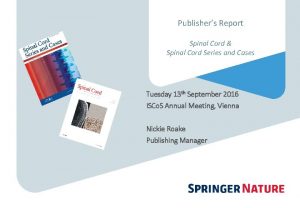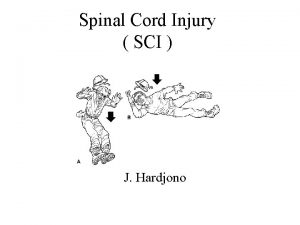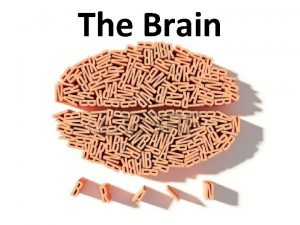Spinal cord protection in surgery of descending thoracic






















- Slides: 22

Spinal cord protection in surgery of descending thoracic aorta Present by R 1康庭瑞

Case w 55 y/o male, HTN for 20+ years with regular medical control for 5 years w Chronic dissecting aortic aneurysm type III noted for 5 years w Left chest pain for 1 week w Denied other systemic diseases w Laboratory data: within normal range





Case w Normal screening spirometry w 2 -D echocardiography: dilated aortic root(diameter 63 mm) & LA, mild MR, good LV contractility w Planning: 1. Left post-lat thoracotomy 2. Femoralfemoral CPB 3. Hypothermia with circulation arrest and retrograde cerebral perfusion via high CVP 18~20 mm. Hg by femoral artery perfusion and partial clamp of venous drain tube 4. Restore proximal aorta perfusion after proximal anastomosis through graft cannulation 5. Open distal anastomosis




Case w Cooling to 16℃ w Partial bypass: 3 hr 25 min w Total bypass: 2 hr 30 min w Aortic cross clamp: ? min w Circulatory arrest: 20 min w Double lumen single-lumen ET tube ICU weaning and extubation on post-op day 3 without major complications

Consequences of aortic crossclamping w Spinal cord ischemia w Vascular anatomy: single ant. spinal a. from vertebral a. supply ant. 2/3 of spinal cord; pair of post. spinal a. from post. cerebellar a. supply remainder of spinal cord w Spinal cord perfusion from: vertebral, deep cervical, intercostal, and lumbar a. radicular a. w The largest radicular a. (artery of Adamkiewicz): origin from T 9~12 intercostal a. supply the majority of blood to the lower 2/3 of the spinal cord

Spinal cord ischemia w Paraplegia and paraparesis: major cause of morbidity and mortality after extensive TAAA repair w Incidence: 2~40%, depending on the site and the degree of aortic lesion, with/without dissection (2 fold), cross-clamp duration (less than 30 min), ligation of the artery of Adamkiewicz, elevation in CSF pressure, reperfusion injury, perioperative hyperglycemia

Spinal cord perfusion pressure w CSF pressure increases during aortic clamping “spinal cord compartment syndrome” w Reduction of CSF pressure improves SCPP w Lumbar drains w Combined with distal aortic perfusion

Result w CSF pressure was maintained at 10 mm. Hg or less w 148 nonemergent patients who received simple crossclamping w 105 with combined adjuncts, 43 with or without the addition of a single adjunct w 0. 9% vs 7% (p<0. 04)

Result w 2. 6% vs 13. 0% w Reduced immediate deficits, particularly paraplegia w Infrequent delayed neurologic deficits in both groups w The longer the ischemic time were, the greater the benefit afforded with CSFD

Conclusions w Significantly reduced the rate of neurologic deficit during nonemergent repair of descending thoracic aortic aneurysms w The recently reports had convinced most surgeons of the benefit of CSF drainage in descending thoracic aortic aneurysm

Other adjuncts w Selective cooling spinal cord via lavage of the epidural space: regional hypothemic (26 ℃) protection of at-risk thoracolumbar cord w Corticosteroid, thiopental, NMDA antagonist, papaverine

Complications of lumbar drainage after TAAA repair w Postoperative lower extremity neurologic deficit: result of thromboembolic or delayed ischemic complication or resulting from lumbar drainage w Intradural hematoma: 3. 2% in this study w CT, MRI

Hypothermic cardiopulmonary bypass and circulatory arrest w Methylprednisone and thiopental are given during the period of cooling to 15℃ w Circulatory arrest intervals: mean, 38 min w Postoperative neurologic injury: 2. 7% w Conclusion: hypothermic circulatory arrest offers certain advantages over other techniques and using of other adjunctive measures is not necessary

References w Hypothermic cardiopulmonary bypass and circulatory arrest for operations on the descending thoracic and thoracoabdominal aorta. Annals of thoracic surgery. 74(5): S 18857, 2002 Nov. w Cerebrospinal fluid drainage reduces paraplegia after thoracoabdominal aortic aneurysm repair: results of a randomized clinical trial. Journal of vascular surgery. 35(4): 631 -9, 2002 Apr. w Thoracoabdominal aneurysm repair: results with 337 operations performed over a 15 -year interval. Annals of surgery. 236(4): 471 -9, 2002 Oct. w Complications of lumbar drainage after thoracoabdominal aortic aneurysm repair. Journal of vascular surgery. 34(4): 623 -7, 2001 Oct.

Thanks for your attention!
 Lateral pectoral nerve
Lateral pectoral nerve Ligamentum denticulatum
Ligamentum denticulatum Spinal cord tracts labeled
Spinal cord tracts labeled Figure 13-2 spinal nerves labeled
Figure 13-2 spinal nerves labeled Thoracic surgery
Thoracic surgery Babinski reflex
Babinski reflex Medula espinal
Medula espinal Spinal nerves
Spinal nerves Ventral root
Ventral root Function of the medulla oblongata
Function of the medulla oblongata Spinal cord and brain
Spinal cord and brain Intensivis
Intensivis Spinal cord venous drainage
Spinal cord venous drainage Somi brace
Somi brace Stretch reflex
Stretch reflex Spinal nerves diagram
Spinal nerves diagram Spinal cord
Spinal cord Spinal cord nerve anatomy
Spinal cord nerve anatomy Dorsal nerve cord vs notochord
Dorsal nerve cord vs notochord Spinal cord injury shoulder exercises
Spinal cord injury shoulder exercises Spinal cord spasticity
Spinal cord spasticity End of spinal cord
End of spinal cord Nervous sysytem
Nervous sysytem




